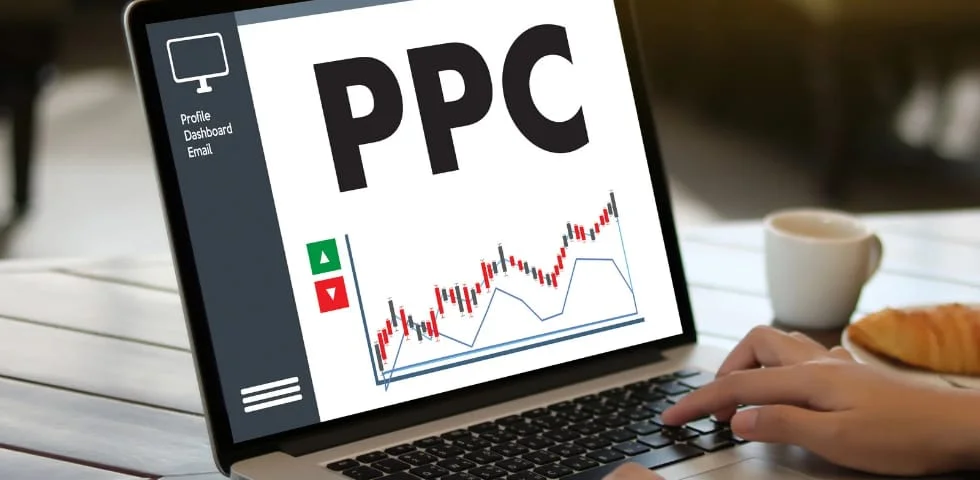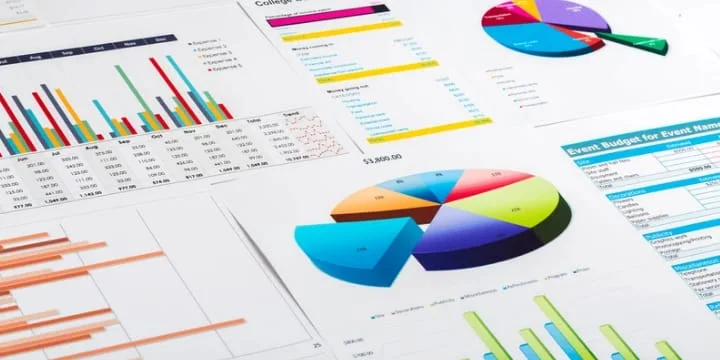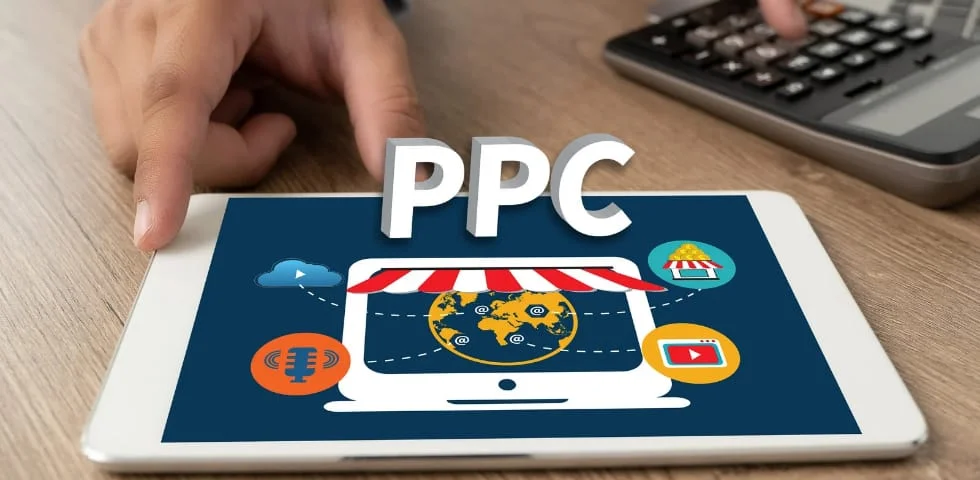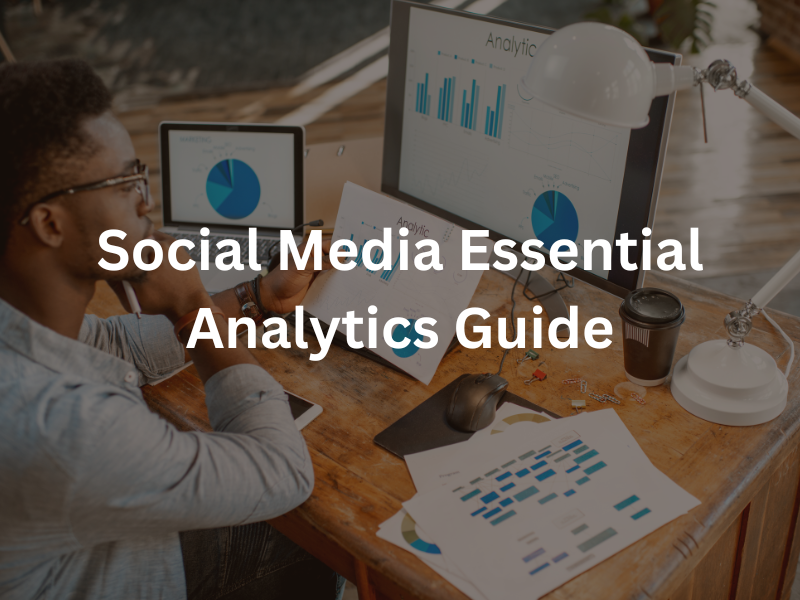Introduction
In the ever-evolving landscape of digital marketing, staying ahead of the competition requires strategic and effective advertising. With countless businesses vying for the attention of the same audience, the question is: How do you ensure your brand stands out and captures the right traffic? The answer lies in PPC (Pay-Per-Click) advertising.
PPC advertising has become an essential tool for digital marketers and business owners aiming to drive targeted traffic and boost sales. But what exactly is PPC, and how can you leverage it to maximize your marketing efforts? This guide will delve into the fundamentals of PPC advertising, explore its benefits, and provide actionable insights to help you master this powerful marketing tool.
As we navigate through the nuances of PPC, you’ll discover how to set up successful campaigns, manage them efficiently, and analyze their performance to achieve optimal results. Whether you’re new to PPC or looking to refine your strategy, this comprehensive guide will equip you with the knowledge and tools needed to harness the full potential of paid advertising.
Are you ready to elevate your digital marketing game and see tangible results? Let’s dive into the world of PPC advertising and unlock the secrets to driving traffic and sales.
What is PPC Advertising?
PPC (Pay-Per-Click) advertising is a model of internet marketing in which advertisers pay a fee each time one of their ads is clicked. Essentially, it’s a way of buying visits to your site rather than attempting to “earn” those visits organically. PPC ads can appear on various platforms, including search engines, social media networks, and other websites.
How PPC Works

At its core, PPC is straightforward. Advertisers create ads and bid on specific keywords relevant to their target audience. When a user searches for one of these keywords, the ad may appear in the search results. If the user clicks on the ad, the advertiser pays a small fee, hence the name “pay-per-click.”
Different Types of PPC Ads
- Search Ads: These are the most common type of PPC ads and appear on search engine results pages (SERPs) when users search for specific keywords. They are typically text-based and highly targeted.
- Display Ads: Display ads are visual-based and appear on websites within the Google Display Network. They can include images, videos, or interactive elements and are designed to attract users’ attention as they browse.
- Social Media Ads: Platforms like Facebook, Instagram, Twitter, and LinkedIn offer PPC advertising options. These ads can be highly targeted based on user demographics, interests, and behaviors.
- Shopping Ads: Often seen on Google, these ads display product images, prices, and merchant information directly in the search results, making them ideal for e-commerce businesses.
- Remarketing Ads: These ads target users who have previously visited your website but didn’t convert. By reminding them of your product or service, remarketing ads encourage them to return and complete their purchase.
Benefits of PPC Advertising
PPC advertising offers several advantages that make it an essential component of any digital marketing strategy. Here are the key benefits:

Immediate Results and Traffic
Unlike organic search engine optimization (SEO), which can take months to yield results, PPC advertising provides almost instant visibility. As soon as your campaign goes live, your ads can start appearing in search results, driving immediate traffic to your website.
Highly Targeted Audience
PPC allows you to target specific demographics, locations, devices, and even times of the day. You can also select keywords that match the intent of your ideal customers. This high level of targeting ensures that your ads are seen by the people most likely to be interested in your products or services.
Measurable ROI
One of the greatest advantages of PPC is its measurability. You can track virtually every aspect of your campaign, from impressions and clicks to conversions and sales. This data allows you to calculate your return on investment (ROI) accurately and make data-driven decisions to optimize your campaigns.
Budget Control and Flexibility
With PPC, you have complete control over your budget. You can set daily or monthly spending limits and adjust them as needed. Whether you have a small or large budget, PPC campaigns can be scaled to fit your financial constraints while still delivering results.
Complementary to Other Marketing Strategies
PPC works well alongside other digital marketing strategies, such as SEO and content marketing. While SEO focuses on building organic traffic over time, PPC provides an immediate boost in visibility. Together, they create a balanced approach that can enhance your overall marketing efforts.
Brand Exposure
Even if users don’t click on your ads, seeing them repeatedly can increase brand awareness and recognition. Over time, this exposure can help establish your brand as a leader in your industry and keep your business top-of-mind for potential customers.
Setting Up a PPC Campaign
Creating a successful PPC campaign involves several crucial steps. Here’s a detailed guide to help you set up your first PPC campaign or refine your existing strategy.

Choosing the Right Platform
The first step is selecting the appropriate platform for your PPC ads. Google Ads is the most popular choice, but other options include Bing Ads and various social media networks like Facebook, Instagram, LinkedIn, and Twitter. Choose a platform based on where your target audience spends their time.
Keyword Research and Selection
Effective keyword research is the foundation of any successful PPC campaign. Use tools like Google Keyword Planner, Ahrefs, or SEMrush to identify relevant keywords that your target audience is searching for. Focus on a mix of broad, exact, and long-tail keywords to capture a wide range of search queries. Remember to consider keyword intent to ensure you target users ready to take action.
Crafting Compelling Ad Copy
Your ad copy is crucial in attracting clicks. It should be clear, concise, and compelling, with a strong call to action (CTA). Highlight the unique selling points (USPs) of your product or service and include relevant keywords to improve ad relevance. Test different headlines and descriptions to see which ones resonate best with your audience.
Setting Up Ad Groups and Campaigns
Organize your keywords and ads into tightly themed ad groups. This structure helps improve the relevance of your ads and can lead to higher Quality Scores in Google Ads. Each ad group should contain a small set of related keywords and ads that match the intent behind those keywords. Group similar ad groups into broader campaigns to manage your budget and settings effectively.
Budgeting and Bidding Strategies
Determine your overall budget and allocate it across your campaigns. Set a daily or monthly budget that aligns with your marketing goals. Choose a bidding strategy that suits your objectives, whether it’s maximizing clicks, targeting specific cost-per-acquisition (CPA) goals, or maximizing return on ad spend (ROAS). Adjust your bids based on performance to ensure you’re getting the most out of your budget.
Best Practices for PPC Management
Once your PPC campaign is up and running, effective management is essential to ensure ongoing success. Here are some best practices to help you optimize your PPC campaigns:

Monitoring and Adjusting Bids
Regularly monitor your bids to ensure you’re not overspending on low-performing keywords or underbidding on high-value ones. Use bid adjustments to increase or decrease your bids based on factors like device, location, and time of day. Automated bidding strategies can also help optimize your bids based on your campaign goals.
A/B Testing Ad Copies
A/B testing, or split testing, involves running multiple versions of your ads to see which performs better. Test different headlines, descriptions, and CTAs to identify the most effective combinations. Continuously refine your ad copy based on the results to improve click-through rates (CTR) and conversion rates.
Using Negative Keywords
Negative keywords prevent your ads from showing up for irrelevant search queries, saving you money and improving the quality of your traffic. Regularly review your search term reports to identify and add negative keywords. This practice helps ensure your ads are only shown to users who are likely to be interested in your products or services.
Optimizing Landing Pages
Your landing page plays a crucial role in converting clicks into customers. Ensure your landing pages are relevant to your ads, load quickly, and provide a seamless user experience. Use clear and compelling headlines, strong CTAs, and optimized forms. A/B test different elements of your landing pages to identify and implement the most effective designs.
Tracking Conversions and Analytics
Accurate tracking is essential for measuring the success of your PPC campaigns. Set up conversion tracking to monitor actions such as purchases, sign-ups, or downloads. Use tools like Google Analytics to analyze your campaign performance and gain insights into user behavior. Regularly review your data to identify trends and areas for improvement.
Measuring and Analyzing PPC Performance
To ensure your PPC campaigns are effective and delivering a solid return on investment, it’s crucial to measure and analyze their performance. Here’s how to do it:

Key Metrics to Monitor
- Click-Through Rate (CTR): This metric measures how often people click on your ad after seeing it. A high CTR indicates that your ad is relevant and engaging to your audience. To improve CTR, focus on creating compelling ad copy and using highly relevant keywords.
- Cost Per Click (CPC): CPC indicates how much you pay each time someone clicks on your ad. Monitoring your CPC helps you manage your budget and determine the cost-effectiveness of your keywords.
- Conversion Rate: This is the percentage of clicks that result in a desired action, such as a purchase or sign-up. A high conversion rate means your landing page and overall campaign are effectively driving users to take action.
- Cost Per Acquisition (CPA): CPA measures the cost of acquiring a customer through your PPC campaign. Lowering your CPA involves optimizing your ad targeting, bids, and landing pages to drive more conversions at a lower cost.
- Return on Ad Spend (ROAS): ROAS calculates the revenue generated for every dollar spent on advertising. A high ROAS indicates a profitable campaign. To improve ROAS, focus on targeting high-value keywords and optimizing your ad copy and landing pages.
Tools for Tracking Performance
- Google Analytics: This powerful tool provides in-depth insights into your website traffic and user behavior. Use it to track conversions, analyze user paths, and identify areas for improvement.
- Google Ads Dashboard: The Google Ads platform offers a comprehensive set of tools to track and analyze your PPC campaign performance. Use it to monitor key metrics, set up automated rules, and adjust your bids and budgets.
- SEMrush: This tool offers robust PPC analytics and competitor analysis features. Use it to identify keyword opportunities, track your ads’ performance, and gain insights into your competitors’ strategies.
Interpreting Data and Making Informed Decisions
Regularly review your campaign data to identify trends and areas for improvement. Look for patterns in your metrics to understand what’s working and what’s not. Use this information to adjust your bids, ad copy, and targeting. For example, if you notice that certain keywords have a high CPC but low conversion rate, consider lowering your bids or pausing those keywords.
Continuous Improvement Strategies
PPC is not a set-it-and-forget-it strategy. Continuously test and refine your campaigns to achieve optimal results. Here are some strategies for ongoing improvement:
- Regularly update your keyword list based on performance and new trends.
- Experiment with different ad formats and extensions.
- Use remarketing to re-engage users who didn’t convert on their first visit.
- Monitor competitor activity and adjust your strategy accordingly.
Common PPC Mistakes to Avoid
Avoiding common mistakes in PPC advertising can save you money and improve your campaign’s effectiveness. Here are some pitfalls to watch out for:

Ignoring Negative Keywords
Failing to use negative keywords can lead to wasted ad spend on irrelevant searches. Regularly review your search term reports and add negative keywords to prevent your ads from showing up for non-converting queries. This helps improve the quality of your traffic and reduces costs.
Poor Ad Copy
Ineffective ad copy can result in low click-through rates and poor performance. Ensure your ad copy is clear, compelling, and relevant to your target audience. Highlight your unique selling points (USPs) and include a strong call to action (CTA). A/B testing different versions of your ad copy can help you identify what resonates best with your audience.
Not Optimizing Landing Pages
Your landing page is where conversions happen. A poorly designed or irrelevant landing page can lead to high bounce rates and low conversion rates. Ensure your landing pages match the intent of your ads, load quickly, and provide a seamless user experience. Use clear headlines, engaging content, and strong CTAs to guide users towards taking action.
Neglecting Mobile Users
With the increasing use of mobile devices, neglecting mobile optimization can hurt your PPC performance. Ensure your ads and landing pages are mobile-friendly. This includes responsive design, fast loading times, and easy navigation. Monitoring mobile-specific metrics can help you identify areas for improvement and optimize for mobile users.
Overlooking Conversion Tracking
Without proper conversion tracking, it’s challenging to measure the success of your PPC campaigns. Set up conversion tracking to monitor actions such as purchases, sign-ups, or downloads. This data is crucial for calculating your return on investment (ROI) and making informed decisions to optimize your campaigns.
Failing to Adjust Bids
Static bids can result in overspending or missing out on valuable opportunities. Regularly adjust your bids based on performance data. Increase bids for high-performing keywords and decrease or pause bids for low-performing ones. Automated bidding strategies can also help optimize your bids to achieve specific campaign goals.
Ignoring Quality Score
Quality Score is a metric used by Google Ads to measure the relevance and quality of your ads and landing pages. A low Quality Score can lead to higher costs and lower ad positions. To improve your Quality Score, focus on creating relevant ad copy, using targeted keywords, and optimizing your landing pages.
Tools and Resources for PPC Campaigns
Leveraging the right tools and resources can significantly enhance the effectiveness and efficiency of your PPC campaigns. Here are some essential tools and resources to consider:

Keyword Research Tools
- Google Keyword Planner: This tool is invaluable for discovering new keywords and estimating their search volume and cost. It helps you identify relevant keywords to target and provides insights into their competitiveness.
- Ahrefs: Known for its robust keyword research capabilities, Ahrefs offers comprehensive data on keyword difficulty, search volume, and potential traffic. It also provides competitor analysis to help you identify keyword opportunities.
- SEMrush: SEMrush is another powerful tool for keyword research and competitive analysis. It allows you to explore new keyword ideas, track keyword performance, and analyze your competitors’ strategies.
Ad Creation Tools
- Canva: Canva is a user-friendly design tool that helps you create visually appealing display ads and social media ads. It offers a wide range of templates, images, and design elements to make your ads stand out.
- AdEspresso: This tool simplifies the creation and management of Facebook and Instagram ads. It provides a platform to design, test, and optimize your ads, helping you improve their performance.
Analytics and Tracking Tools
- Google Analytics: Google Analytics provides in-depth insights into your website traffic and user behavior. It helps you track conversions, understand user paths, and identify areas for improvement. Integrating Google Analytics with Google Ads allows for comprehensive performance analysis.
- Google Ads Dashboard: The Google Ads platform itself offers a comprehensive set of tools for tracking and analyzing your PPC campaigns. You can monitor key metrics, set up automated rules, and adjust bids and budgets based on performance data.
- HubSpot: HubSpot offers robust analytics and tracking features, along with tools for managing and optimizing your PPC campaigns. It helps you track conversions, measure ROI, and gain insights into your marketing efforts.
Additional Resources
- PPC University by WordStream: This free resource offers a wealth of information on PPC advertising. It includes courses, guides, and webinars to help you improve your PPC skills and strategies.
- Google Ads Help Center: The official Google Ads Help Center provides detailed documentation and tutorials on using the platform. It’s a great resource for troubleshooting and learning about new features.
- Blogs and Forums: Staying up-to-date with industry trends and best practices is crucial. Follow blogs like Search Engine Land, PPC Hero, and WordStream for the latest insights. Participating in forums like Reddit’s PPC community and Google Ads Community can also provide valuable tips and support.
Case Studies of Successful PPC Campaigns
Examining real-world examples of successful PPC campaigns can provide valuable insights and inspiration for your own efforts. Here are a few notable case studies that highlight the strategies and results achieved through effective PPC advertising.

Case Study 1: Airbnb
Objective: Drive more bookings through PPC ads targeting travelers.
Strategy:
- Targeting Long-Tail Keywords: Airbnb focused on long-tail keywords related to specific travel destinations and experiences. This strategy allowed them to capture highly relevant traffic with lower competition and cost-per-click (CPC).
- Dynamic Search Ads: Airbnb used dynamic search ads to automatically generate ads based on the content of their website. This ensured that their ads were always relevant to users’ search queries.
- Remarketing Campaigns: They implemented remarketing campaigns to re-engage users who had previously visited their site but hadn’t made a booking. Tailored ads were shown to these users, encouraging them to return and complete their bookings.
Results:
- Increased Conversions: The combination of targeted long-tail keywords and dynamic search ads led to a significant increase in bookings.
- Improved ROI: Remarketing campaigns resulted in a high return on investment (ROI), as they efficiently converted previous visitors into customers.
Case Study 2: WordStream
Objective: Generate leads and increase trial sign-ups for their PPC management software.
Strategy:
- Comprehensive Keyword Strategy: WordStream used a mix of broad, exact, and phrase match keywords to capture a wide range of search queries. They also regularly updated their negative keyword list to avoid irrelevant clicks.
- A/B Testing Ad Copy: They conducted extensive A/B testing on their ad copy, headlines, and CTAs to identify the most effective combinations. This continuous testing and optimization improved their click-through rates (CTR) and conversion rates.
- Landing Page Optimization: WordStream created highly targeted landing pages that matched the intent of their ads. Each landing page was designed to provide relevant information and a clear path to conversion, with minimal distractions.
Results:
- Higher Quality Leads: The targeted keyword strategy and optimized landing pages resulted in a higher quality of leads, with more users signing up for trials.
- Increased Conversion Rates: A/B testing and continuous optimization of ad copy significantly boosted conversion rates, leading to more trial sign-ups and ultimately more customers.
Case Study 3: Dropbox
Objective: Increase sign-ups for their cloud storage services through PPC advertising.
Strategy:
- Focus on Core Keywords: Dropbox targeted core keywords related to cloud storage and file sharing. They also used competitor keywords to capture users looking for similar services.
- Creative Ad Formats: Dropbox utilized various ad formats, including search ads, display ads, and video ads, to reach their audience across different platforms and stages of the buying journey.
- Localization: They ran localized campaigns to target users in different regions, ensuring that their ads were relevant to the specific needs and preferences of users in those areas.
Results:
- Boosted Sign-Ups: The focused keyword strategy and diverse ad formats led to a significant increase in sign-ups for Dropbox’s services.
- Global Reach: Localization efforts expanded their reach, allowing Dropbox to attract customers from various regions and grow their global user base.
Future Trends in PPC Advertising
The landscape of PPC advertising is constantly evolving, driven by advancements in technology and changes in consumer behavior. Staying ahead of these trends can help you maintain a competitive edge and optimize your campaigns for future success. Here are some key trends to watch:

Automation and AI in PPC
Artificial intelligence (AI) and machine learning are revolutionizing PPC advertising. Automation tools can now handle tasks like bid adjustments, keyword research, and ad creation, allowing marketers to focus on strategy and optimization. AI-driven algorithms analyze vast amounts of data to make real-time adjustments that improve campaign performance. Adopting these technologies can enhance efficiency and deliver better results.
Voice Search and Its Impact on PPC
With the rise of voice-activated devices like Amazon Echo and Google Home, voice search is becoming more prevalent. This trend is changing the way users search for information, often using longer, conversational queries. Marketers need to adapt their PPC strategies to include long-tail keywords and natural language phrases that align with voice search behavior.
The Rise of Video Ads
Video content is gaining popularity, and platforms like YouTube and social media networks offer robust video advertising options. Video ads can be more engaging and memorable than text or image ads, making them an effective way to capture audience attention. As video consumption continues to grow, incorporating video ads into your PPC strategy can help you reach a broader audience and drive higher engagement.
Personalization and Hyper-Targeting
Consumers expect personalized experiences, and PPC advertising is no exception. Hyper-targeting allows you to create highly customized ads based on user demographics, interests, and behaviors. Advanced targeting options, such as custom audiences and lookalike audiences, enable you to deliver relevant ads to the right people at the right time, improving conversion rates and ROI.
Integration of PPC with Other Marketing Channels
Integrating PPC with other digital marketing channels, such as SEO, content marketing, and social media, can create a cohesive and effective strategy. For instance, combining PPC and SEO efforts can improve overall search visibility and drive more traffic. Using PPC to promote high-quality content can increase engagement and brand awareness. A multi-channel approach ensures that your marketing efforts work together to achieve your goals.
Increased Focus on Mobile Optimization
As mobile usage continues to rise, optimizing PPC campaigns for mobile devices is crucial. Ensure that your ads and landing pages are mobile-friendly, with fast loading times and easy navigation. Mobile-specific features, such as click-to-call buttons and location-based targeting, can enhance the user experience and drive higher conversion rates.
Enhanced Reporting and Analytics
Advanced reporting and analytics tools provide deeper insights into campaign performance. Platforms like Google Ads and Google Analytics offer detailed data on user behavior, conversion paths, and ROI. Leveraging these insights allows you to make data-driven decisions, optimize your campaigns, and achieve better results.
Conclusion
In the fast-paced world of digital marketing, PPC advertising stands out as a powerful tool for driving targeted traffic and increasing sales. By understanding the fundamentals of PPC and implementing best practices, you can create effective campaigns that deliver immediate results and measurable ROI.
From setting up your first PPC campaign to optimizing ad copy and landing pages, this guide has covered the essential steps to help you master PPC advertising. By avoiding common mistakes and leveraging the right tools and resources, you can refine your strategy and achieve continuous improvement.
As we look to the future, staying informed about emerging trends like automation, voice search, and video ads will ensure your PPC campaigns remain competitive and relevant. Personalization and hyper-targeting will allow you to connect with your audience on a deeper level, while integration with other marketing channels will create a cohesive and effective strategy.
Remember, PPC advertising is not a one-time effort but an ongoing process of testing, learning, and optimizing. By monitoring key metrics and making data-driven decisions, you can maximize the impact of your PPC campaigns and drive sustained growth for your business.
Ready to take your PPC advertising to the next level? Start implementing these strategies today and watch your traffic and sales soar.













